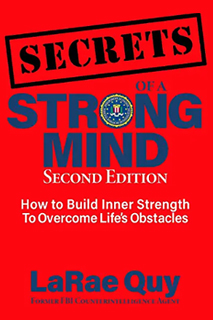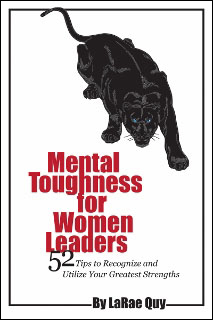As we continue to deal with the news geyser known as COVID, we’re left with the opportunity—no, the need—to take a closer look at our own lives. On one hand, science has triumphed. On the other hand, we feel as though we’re in a disaster movie, standing in front of a massive fire that is about to engulf the entire world in flames.
We may move forward but there are still hints of shock around us as we instinctively blame the pandemic; there is fear mixed with hope. From frontline workers worried for their physical safety, parents who struggled to balance online learning with working from home to those who lost their job or a loved one, there is a heaviness that won’t be eliminated by a couple of shots in the arm.
Yes, it’s tempting to blame the pandemic for most of what ails us these days. Health organizations, however, offer a different perspective—the pandemic has exacerbated a problem that has been around for years.
It’s called burnout.
The pandemic has done something truly remarkable—it’s exposed how thinly stretched and worn down many of us are and have been for a while. This has only made burnout a much worse problem.
Burnout was rearing its ugly head long before we were hit by the COVID shitstorm. The pandemic was merely an accelerant. A 2018 study in the journal Mayo Clinic Proceedings found that the rate of “overall burnout” among the general U.S. workforce was 28%.
Burnout may be a bit like true love—hard to define but when it smacks you in the face, you know you’ve been hit. The World Health Organization (WHO) defines burnout as a phenomenon driven by chronic unmanaged stress.
Christina Maslach, a psychology professor at the University of California, Berkeley takes it a bit further and asserts that exhaustion is the central quality of burnout. But, by itself, exhaustion does not lead to burnout so there is another component. According to Maslach, burnout happens as we try to distance ourselves from our work as a way to cope with work overload.
It’s no accident that the symptoms of burnout can be confused with depression. However, both the World Health Organization and Maslach point out that burnout’s symptoms are work-related which is an important distinction. Burnout can imply a person is questioning the significance or impact of their profession. Depression, on the other hand, can leave a person is questioning the significance of themselves. They feel overwhelmed by just about everything.
Since most of us realize that burnout is a work-related issue, isn’t it about time that organizations stop dumping the problem on the shoulders of their employees? We’ve all heard the recommended solutions: more yoga, meditation apps, spa treatments, and subsidized gym memberships.
These solutions are akin to putting a bandaid on cancer. Yeah, they’re great self-care options but they will do little to prevent or cure burnout.
Here is how to gain control over burnout, the new American epidemic:
1. Recognize The Symptoms of Burnout
We can all feel tired and drained of energy, but at what point does it cross the tipping point and become exhaustion? The Maslach Burnout Inventory General Survey and the Areas of Worklife Survey both assessed how employees experience burnout. The nearly 50,000 respondents scored very high on exhaustion and cynicism — two important indicators of burnout.
When we’re tired we go on vacation or get a few hours of extra sleep and the symptoms are alleviated by rest. Exhaustion, however, means the body cannot keep up and this becomes a serious health issue. Exhausted people experience anxiety, emotional numbness, difficulty sleeping, social withdrawal, and find it hard to do the basic things to keep their lives afloat.
The second symptom of burnout is cynicism, which is even more troubling than exhaustion. Cynicism reflects a lack of trust in the world. It’s a defense position we take to protect ourselves; we start to seek out and focus on the worst in other people. This negative filter distorts our perception of the world and becomes a downward spiral. We may feel “let down” by the government’s response to the pandemic, as well as by the injustice of the pandemic itself.
How To Make It Work For You: Don’t stay in denial if you’re experiencing burnout. If you recognize the symptoms in yourself, get help. One of the best ways to begin the process is to talk through your cynicism with someone you trust. This will not make it magically go away, but you need to find ways to bring your honest emotions to the surface. Only when you confront them in the full face of light can you begin to pull yourself out of the gloom.
If you are experiencing exhaustion, read on…
2. Fight Back Against Unsustainable Workloads

In 2019 the World Health Organization described burnout as the fallout from chronic workplace stress that’s not been successfully managed. This makes clear that burnout is not just an individual problem; it’s an organizational problem that requires an organizational solution.
We need to look no further than the culture shaped by technology tyrants who celebrate overwork while the media glorifies them. The rest of us are left feeling like losers if we don’t keep up. In 2018 Elon Musk tweeted the following: “There are way easier places to work (than Tesla), but nobody ever changed the world on 40 hours a week.” So how many hours a week do we need to work to change the world? “About 80,” Musk tweeted.
A 2015 New York Times article about Amazon reported employees were told by leadership that, when they “hit the wall” from the unrelenting pace, there was only one solution: “Climb the wall.” Others described “marathon conference calls on Easter Sunday and Thanksgiving, criticism from bosses for spotty Internet access while on vacation, and hours spent working at home most nights or weekends.”
Meanwhile, research from Gallup has shown that the risk of occupational burnout increases significantly when an employee’s workweek averages more than 50 hours and rises even more substantially at 60 hours.
How did it come to this?
The lure of big paychecks still rings loud in Silicon Valley and other hi-tech areas. And yes, they’re the same ones who believe the person who dies with the most toys, wins.
How To Make It Work For You: No one wants to hear from a wimp who is too lazy to put in the extra work. So give your boss concrete reasons why declining more work is best for the productivity of both you and your team. Be honest with your boss and tell them how you came to your conclusions. Keep in mind they are probably feeling burnout as well. It doesn’t help to point fingers but it’s your responsibility to remind your boss of what’s happening and how it can affect the bottom line.
3. Seek More Control And Flexibility
As millions continue working from home during the pandemic, many questions have been raised about how these work conditions can positively affect our health. New studies show there is a strong correlation between autonomy and our ability to deal with job-related demands.
Work stressors are more likely to cause depression, burnout, and chronic health issues in workers who have little or no control over their job. When job demands are greater than our ability to deal with these demands, there will be a deterioration of both mental and physical health.
Flexibility and control of our schedules help us cope with work stressors. This allows us to prioritize in a way that helps us achieve our work goals and avoid burnout.
How To Make It Work For You: Many of us do not have the luxury of flexible work hours. That doesn’t mean we can’t find ways to build structure in a chaotic schedule:
Don’t let needy people rob you of your free time. Sure, you want to be nice and generate a warm, fuzzy environment with your colleagues, but always have an escape hatch when a needy person threatens to eat up your precious time. Instead, suggest a raincheck for when you have more control of your schedule.
Write down priorities. When you write them down, your brain knows that “you’re on it” so it doesn’t have to remind you at, say—3:00 am.
Make a to-do list. Your brain loves it when you organize your daily activities because to-do lists free up your brain to work on more complex issues that will confront you at work.
4. Fight Meeting Fatigue

It should come as no surprise that meetings are frequently one of our biggest time sucks. It tops the list of things that companies need to tackle if they hope to reduce burnout among their employees.
How To Make It Work For You: Until leadership can get its act together, you may be the best one to set your own boundaries. It may also mean you need to be mentally tough to stay on track.
1. Ask whether this meeting is really important. If not, skip it.
2. If yes, then ask:
- If this is a video meeting, can it be handled over the phone to give everyone a much-needed screen break?
- Does it need to be over 30 minutes?
- Which attendees are absolutely necessary?
3. If you are the meeting coordinator, take the time to check in with everyone. How are people feeling? Set a timer so that you don’t get off schedule. Give people the flexibility to jump off the call early if they need to.
5. Create A Strong Connection with Family, Friends, or Colleagues
While Zoom calls are effective, they can’t replace a face-to-face over coffee or lunch. Developing a strong connection to family, friends, and/or colleagues is one of the most effective ways the U.S. Army helps soldiers to move past Post Trauma Stress Disorder (PTSD)—and burnout is a form of PTSD.
Not everyone belongs to a tight-knit family that always says and does the right things at the right time. In fact, most of us have to move through the thorny mess of family in our quest to find people who have either experienced similar situations or who are able to establish trust and respect in ways that are meaningful to us.
How To Make It Work For You: Take the time to make solid relationships a priority. They may be family members, colleagues, or neighbors with whom you develop a bond of trust and respect. Even more importantly, make this a priority before your next crisis. When you’re feeling exhausted and cynical, it’s a poor time to start shopping for best friends.
6. Reach Out To Others

The pandemic and its aftermath have boiled down to this: Tired leaders leading tired people.
If you’re experiencing burnout, guess what? So are your colleagues, managers, and leaders. As an example, early on in the pandemic, organizations and individuals alike assumed it to end quickly. In the spring of 2020, health care workers were applauded and celebrated, but over time, that stopped, and at a time when health care workers needed it the most as the pandemic kept its vicious attack on life. Nurses, doctors, and first responders already had the highest rates of burnout, but COVID took them to unprecedented levels.
How To Make It Work For You (and others): The small things you say and do over time make a big difference. It’s tempting to suggest that you stop and ask a colleague, “How are you doing?” But, surveys show that most people lie about how they’re feeling. Instead, follow up with, “Are you sure you’re OK? If you ever need to talk, let me know.” It may seem like an added burden to your already overloaded day, but humans like to make sense of the messiness of life, and your effort to help someone else may be just the thing to wipe out your own cynicism.
© 2022 LaRae Quy. All rights reserved.
You can follow me on Twitter, Facebook, Instagram, AND LinkedIn
Are you mentally tough? Take this evidence-based, FREE Mental Toughness Assessment
Check out my new online training program at www.SecretsOfAStrongMind.com
Get my new book, “Secrets of a Strong Mind (second edition): How To Build Inner Strength To Overcome Life’s Obstacles”

Author of “Mental Toughness for Women Leaders: 52 Tips To Recognize and Utilize Your Greatest Strengths”



uplifting and specific insights thanks LaRae Quy
Great post LaRae!
So important for all of us to address our feelings and concerns during this on-going pandemic and work from home. I find that it is essential to take breaks and check in with the people who we trust and care about us. I also think we are deserving of fresh air to keep us energized.